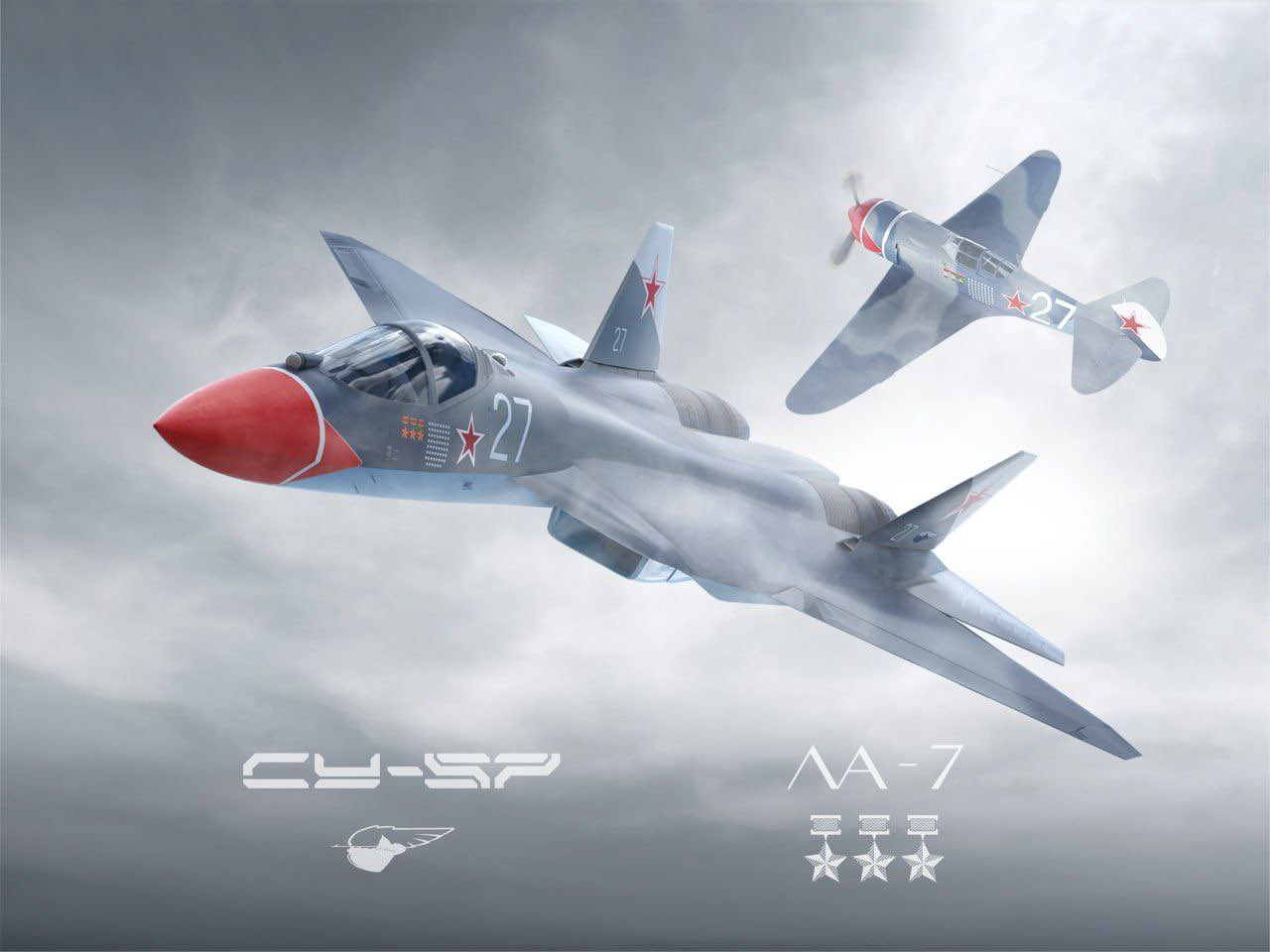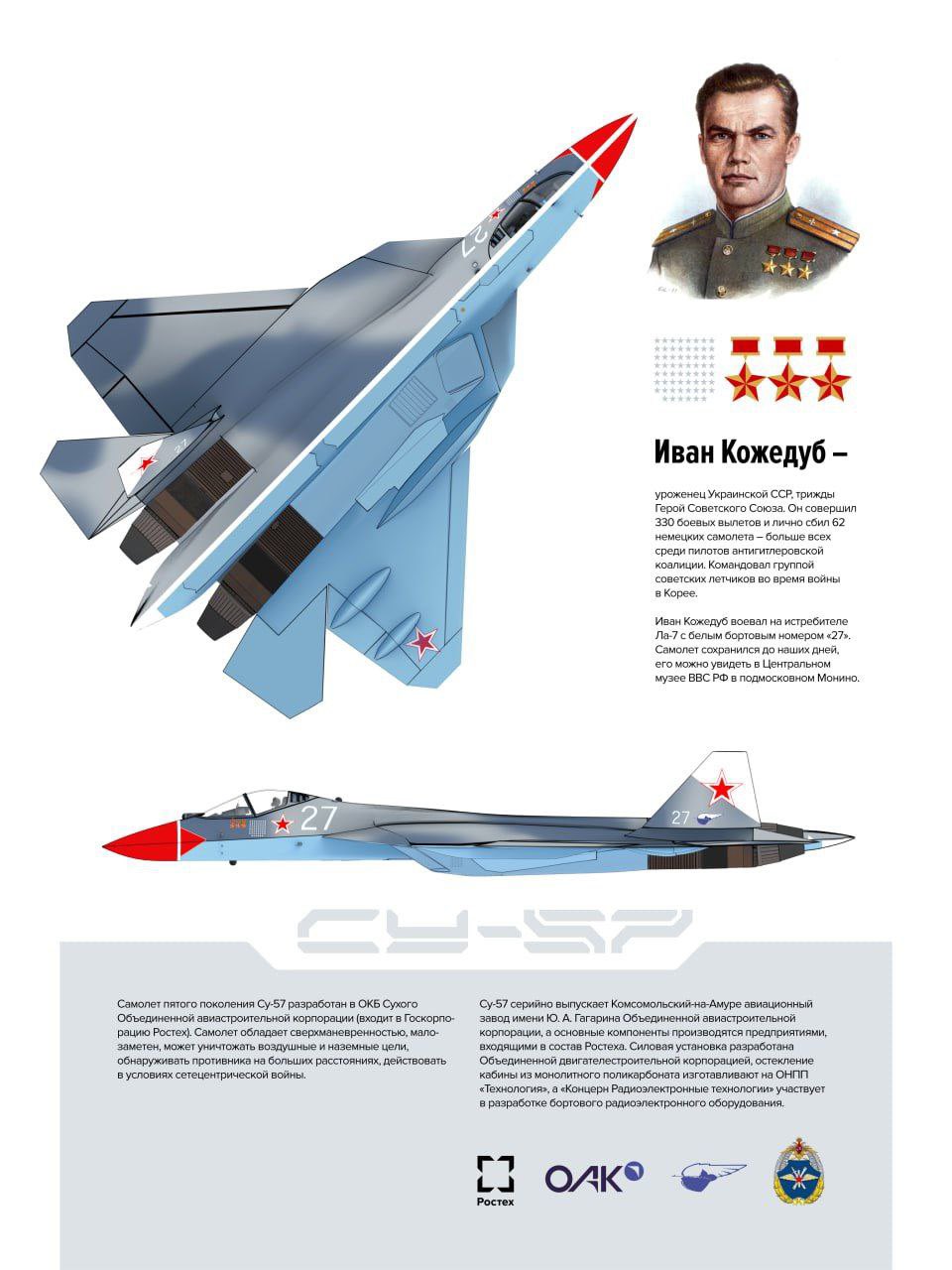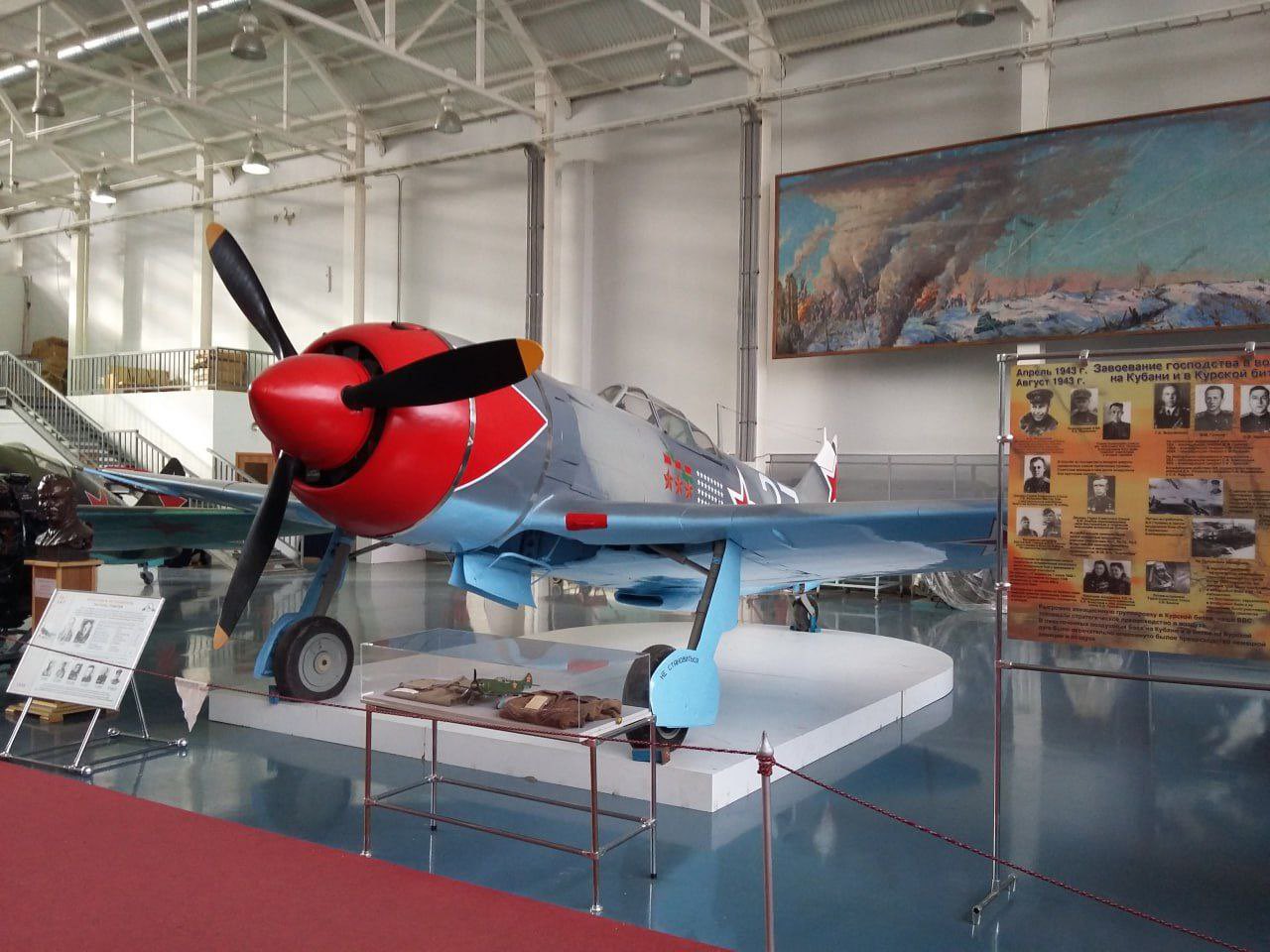In a tribute to the heroic legacy of Soviet ace pilot Ivan Kozhedu, the Rostec State Corporation unveiled a historical livery for the fifth-generation Su-57 aircraft on Victory Day.
The livery, crafted to replicate the camouflage of the Soviet La-7 combat aircraft Ivan Kozhedub flew during World War II, is a tribute to his remarkable achievements and contributions to aviation history.
“The new livery for the fifth-generation Su-57 stealth aircraft accurately copies the appearance of the historic aircraft. In particular, the pilot’s awards and eight rows of stars are displayed on board the aircraft — according to the number of German aircraft destroyed by him,” stated the press service of the state corporation.
Oleg Yevtushenko, executive director of Rostec, remarked, “In the new camouflage for the Su-57, we embodied the image of the legendary machine of the Second World War, on which the famous ace flew.”
While Moscow has unveiled a livery for the Su-57 fighter, inspired by the aircraft of ace pilot Ivan Kozhedub, it is ironic that the Su-57 is conspicuously absent from the ongoing conflict in Ukraine, a war where stealth technology was expected to dominate.

The Su-57, known as ‘Felon’ by NATO and touted as a fifth-generation fighter, has been mostly kept out from combat operations in Ukraine. The complex and contested airspace over Ukraine, characterized by sophisticated air-defense capabilities, has contributed to Moscow’s cautious approach towards deploying its ‘untested’ Su-57 in combat operations.
Western intelligence and aviation experts have suggested that Russia’s reluctance to deploy the Su-57 in combat could stem from concerns regarding its purported stealth capabilities and advanced technology, which may not be required for cross-border war.
In an early January 2023 intelligence update, Britain’s defense ministry stated that since June 2022, the Russian air force had “almost certainly used” the Su-57 to conduct missions against Ukraine.
However, these missions are believed to have been primarily involved in flying over Russian territory and launching long-range air-to-surface or air-to-air missiles into Ukraine.
Ivan Kozhedub, The Ukrainian Hero Of The USSR
Kozhedub was born on 8 June 1920 to a Ukrainian family in the village of Obrazhiivka, in Chernihiv Governorate, located within what is now Shostka Raion of Ukraine’s Sumy Oblast.
During the tumultuous years of World War II, countless individuals rose to prominence through their acts of courage and skill. Among them, Ivan Nikitovich Kozhedub stands out as one of the celebrated fighter pilots of the Soviet Union. He earned over 60 solo victories and cemented his place as a true war hero.
Born with a passion for military service, Kozhedub’s journey towards becoming a flying ace began in his early years. His fascination with aviation led him to graduate from the Shostka Flying Club, where he honed his skills in the cockpit of the Po-2 aircraft.
Little did he know that the early experience would lay the foundation for his remarkable career as a fighter pilot.
In 1940, Kozhedub joined the Red Army and soon found himself training at the Chuguev Military Aviation School of Pilots. Despite initially serving as an instructor, his relentless determination saw him transferred to the front lines in 1942, where he joined the 240th Fighter Aviation Regiment.
In March 1943, shortly after the notorious Battle of Stalingrad, he embarked on his first sortie as a chase pilot. Unfortunately, his Lavochkin La-5 sustained damage, and during the return journey, he narrowly evaded Soviet anti-aircraft fire.
Kozhedub’s list of accomplishments in the skies was nothing short of legendary. He was the first Soviet pilot to shoot down a German Messerschmitt Me-262.

He engaged in numerous aerial battles throughout the war, downing enemy aircraft with unmatched precision and skill. His skill in the cockpit quickly earned him promotions and accolades, culminating in his appointment as squadron commander.
In February 1945, he shot down a Messerschmitt-262 piloted by Karl Lange, a renowned ace of the Luftwaffe, the German Air Force. Despite the advanced technology of the enemy, Kozhedub’s mastery of aerial combat prevailed, underscoring his status as a true ace.
In addition to his combat achievements, Kozhedub’s humility and integrity set him apart from his peers. He never boasted about his victories and always questioned the fate of the enemy planes he shot down, earning the respect and admiration of all who knew him.
Even after the war, Kozhedub continued to serve his country with distinction. As a jet fighter pilot, he played a crucial role in conflicts such as the Korean War, where his leadership and expertise proved invaluable.

He commanded a squadron of Soviet pilots who engaged in combat with American Sabres in the skies over Korea and achieved notable successes against the enemy aircraft.
Until 1969, Kozhedub routinely piloted fighters and demonstrated mastery over numerous aircraft models. His final flights were conducted on the MiG-21.
Kozhedub’s contributions to his country were further recognized with his appointment as Marshal of Aviation. He was also chosen to serve four consecutive terms in the USSR parliament. His legacy as a national hero endured long after his passing, serving as a source of inspiration for future generations.
In an interview, Major General Vladimir Popov, Honored Military Pilot of the Russian Federation, shared his admiration for Ivan Kozhedub, “For our generation (the 1960s), who dreamed of the sky as boys, people like Kozhedub were legends even then. One could look at him with admiration. For us, these were unattainable peaks of combat skill and heroic personality as well. He was a guiding star by which one could choose the right path in aviation.”
The legendary World War II ace was honored with a remarkable array of awards, including two Orders of Lenin, seven Orders of the Red Banner, the Order of Alexander Nevsky, the Order of the Patriotic War of the First Degree, two Orders of the Red Star, the Order “For Service to the Motherland in the Armed Forces of the USSR” of the II and III degrees, as well as various medals and foreign decorations.
On August 12, 1991, Ivan Nikitovich Kozhedub passed away, leaving a legacy of courage, honor, and sacrifice.
- Contact the author at ashishmichel(at)gmail.com
- Follow EurAsian Times on Google News




